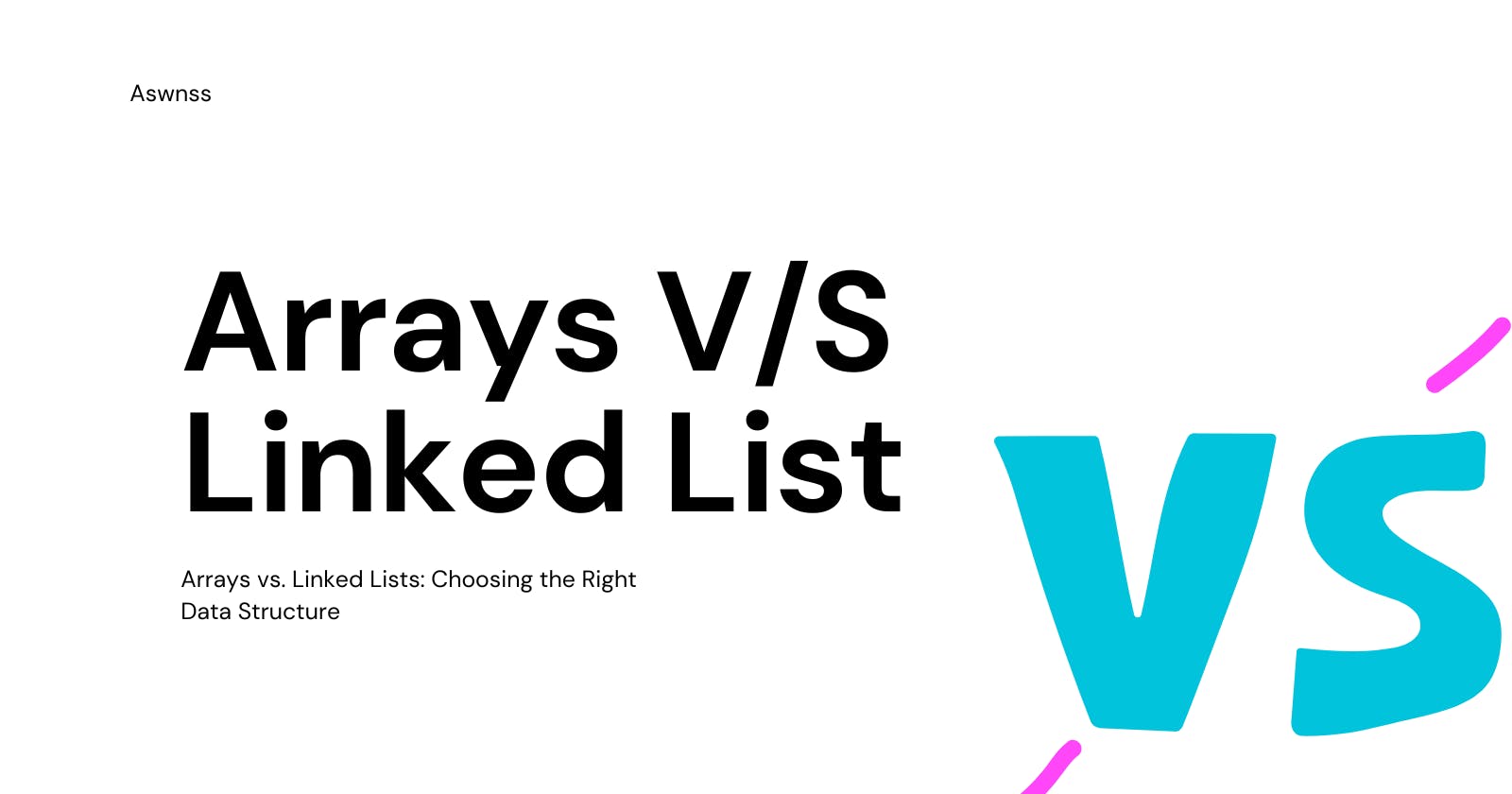Introduction: Data structures are the foundation of efficient and organized programming. When it comes to storing and manipulating data, two popular choices are arrays and linked lists. Each data structure has its own strengths and weaknesses, making it important to understand their characteristics and choose the right one for your specific use case. In this blog post, we will explore the differences between arrays and linked lists, their advantages and disadvantages, provide code examples, and offer insights to help you make informed decisions when selecting the appropriate data structure.
Arrays: Arrays are one of the simplest and most commonly used data structures. They consist of a fixed-size collection of elements of the same type. Each element is accessed using an index, which represents its position in the array. Arrays offer several advantages:
Random Access: Elements in an array can be accessed directly using their index. This allows for constant-time retrieval, making arrays efficient for accessing elements.
Memory Efficiency: Arrays have a compact memory layout since elements are stored in contiguous memory locations. This results in efficient memory utilization and cache locality, which can improve performance.
Let's see an example of using arrays in Python:
# Creating an array
arr = [1, 2, 3, 4, 5]
# Accessing elements
print(arr[0]) # Output: 1
# Modifying elements
arr[2] = 10
# Iterating over the array
for element in arr:
print(element)
# Output: 1
# 2
# 10
# 4
# 5
However, arrays also have limitations:
Fixed Size: Arrays have a fixed size defined at the time of their creation. It can be challenging to resize an array dynamically, requiring additional overhead and potential performance impacts.
Insertion and Deletion: Inserting or deleting elements in the middle of an array requires shifting subsequent elements, resulting in time-consuming operations, especially for large arrays.
Linked Lists: Linked lists are dynamic data structures consisting of nodes, where each node contains data and a reference to the next node. Linked lists offer the following advantages:
Dynamic Size: Linked lists can grow or shrink dynamically as elements are added or removed. This flexibility makes linked lists ideal when the size of the data may vary or change over time.
Efficient Insertion and Deletion: Inserting or deleting elements in a linked list involves adjusting pointers, resulting in faster operations compared to arrays.
Let's see an example of using linked lists in Python:
class Node:
def __init__(self, data=None):
self.data = data
self.next = None
class LinkedList:
def __init__(self):
self.head = None
def insert(self, data):
new_node = Node(data)
if self.head is None:
self.head = new_node
else:
current = self.head
while current.next:
current = current.next
current.next = new_node
def display(self):
current = self.head
while current:
print(current.data)
current = current.next
# Creating a linked list
llist = LinkedList()
# Inserting elements
llist.insert(1)
llist.insert(2)
llist.insert(3)
# Displaying elements
llist.display()
# Output: 1
# 2
# 3
However, linked lists also have considerations to keep in mind:
- Sequential Access: Unlike arrays, linked lists do not support random access. To access an element, you need
to traverse the list from the beginning, resulting in slower access times.
- Memory Overhead: Linked lists require additional memory for storing the next node's reference, resulting in slightly higher memory usage compared to arrays.
Choosing the Right Data Structure: To select the appropriate data structure between arrays and linked lists, consider the following factors:
Access Pattern: If your application requires frequent random access or searching by index, arrays provide faster access times. On the other hand, if your focus is on efficient insertion and deletion operations, linked lists may be a better choice.
Dynamic Size: If your data size is fixed and you do not need to dynamically resize the structure, arrays can offer better memory efficiency and faster access. However, if your data size varies or changes frequently, linked lists provide the flexibility to handle dynamic resizing efficiently.
Space Efficiency: Arrays have a more compact memory layout, making them more space-efficient compared to linked lists, which require additional memory for storing node references.
Complexity: Arrays are simpler to implement and understand, making them a good choice for straightforward applications. Linked lists require managing node references, which adds complexity but provides greater flexibility.
Conclusion: Arrays and linked lists are fundamental data structures, each with its own strengths and weaknesses. Arrays excel in random access and fixed-size scenarios, while linked lists shine in dynamic size and efficient insertion/deletion operations. By understanding their characteristics and evaluating your specific requirements, you can make an informed decision when selecting the appropriate data structure. Remember to consider factors such as access pattern, dynamic size, space efficiency, and complexity to choose the data structure that best suits your needs.
